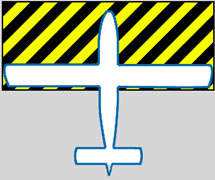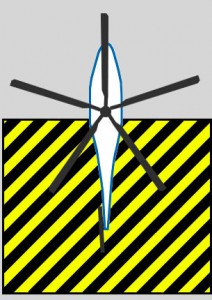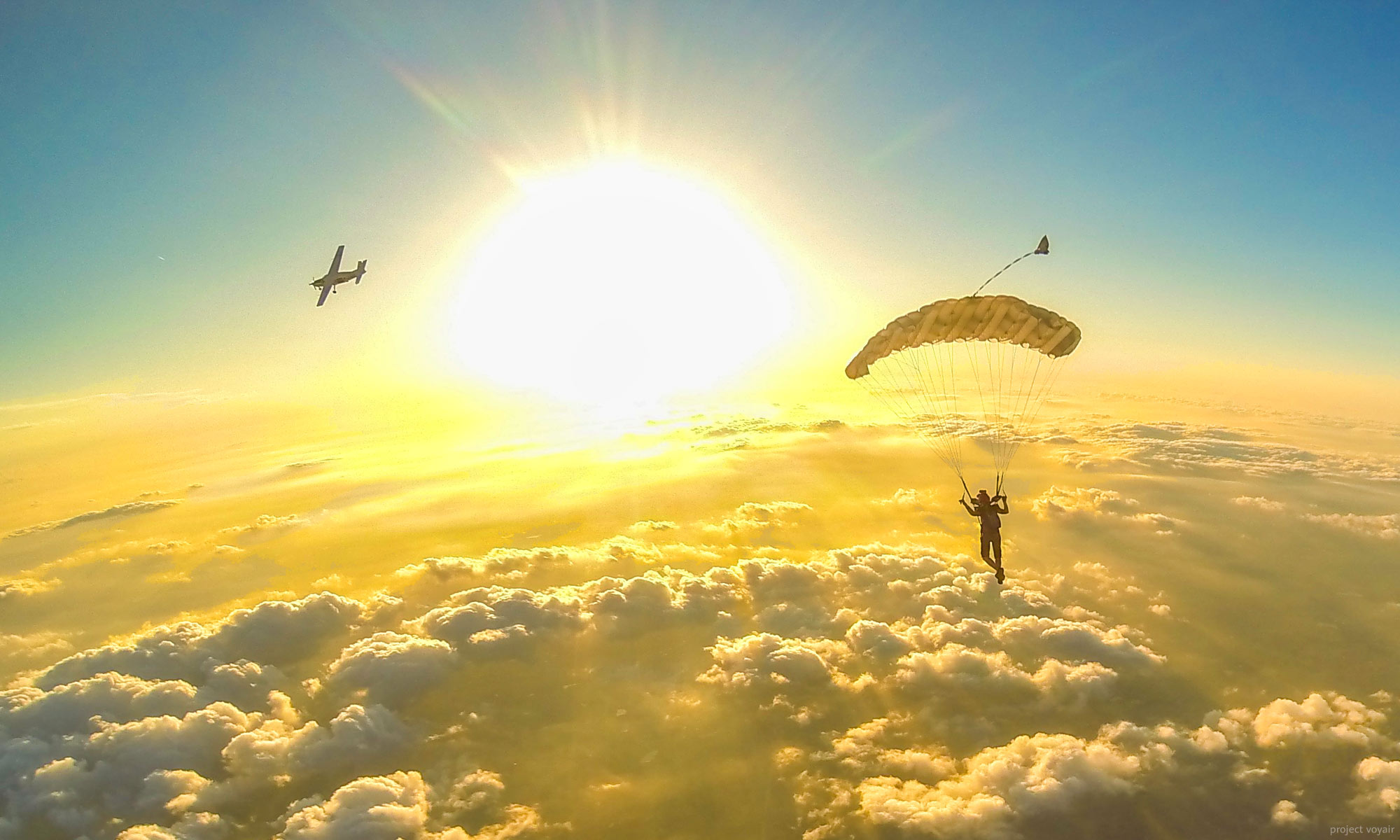There are a lot of things in life we sugarcoat, such as when answering questions like, “How do I look in this dress?” Or “How does this resume sound?” But some things in life just don’t take sugar well–they are what they are. So it is with safety around propellers, be they of the aviation, marine, or any other variety.
We get pretty comfortable moving around airplanes in the skydiving world. We board aircraft while they’re running, climb around outside the door in flight, and jump out of them at altitude. With all this familiarity, repeated several times daily, we can sometimes lose perspective on one plain and simple fact: Spinning propellers maim and kill. And if you make the mistake of getting any part of your body near a spinning propeller, chances are very good that it will be the last mistake you will make.

So we’d like to ask for your help in keeping us all safe from spinning propellers, regardless of where you choose to skydive (this isn’t just a Skydive Spaceland risk–it’s a risk at any airport). Here are 12 tips on propeller safety:
- Know where the propellers are on any aircraft you are approaching. This may seem elementary, but especially when you are visiting new drop zones with unfamiliar aircraft or new aircraft are visiting your home drop zone, props may be in slightly different places than what you’re used to. They are invisible when spinning, especially in low-light situations like boarding for night jumps.
- Never approach or walk through the propeller area on any aircraft, running or not, unless your job requires you to be there.Don’t get in the habit of walking under or next to props on aircraft parked in the hangar, for example. If you always consider the prop area to be a no-walk zone, even after hours with a beer in hand, chances are much lower that you’ll stray into the danger zone during jump operations. Also, prop edges are sharp; even if they’re not moving, they’ll often cut if you bump into them. If you’re not near them, they can’t hurt you.
- Stay behind (not in front of or under) the wing when approaching or departing from any fixed-wing aircraft, whether it’s running or not. Props are located on the fronts of wings or the noses of fixed-wing aircraft, so staying out of the area in front of, underneath, and inboard of the wingtips ensures you will not be in the danger zone.
- Be vigilant for spectators/observers around aircraft. They will often be caught up in the noise and excitement of aircraft operations and may stray into danger zones despite adequate safety signage. usually leading with a smartphone, camera, or tablet. At Spaceland, there should be no spectators in the waiting/loading areas unless they are escorted by staff (observers, media, etc.). If you see an unescorted spectator in restricted areas (whether planes are operating or not), take the initiative to politely let them know that only skydivers and staff should be in the area, and escort them back to the safe public areas. Showing them where they can safely get a good shot of the airplane loading (preferably behind a visible barrier like a fence) will usually make them quite happy and appreciative.
- Be vigilant for fellow skydivers/staff around aircraft propellers. Even experienced skydivers and staff can become too comfortable and/or complacent around running aircraft and walk into the propeller danger zones after a dropped item, in an attempt to talk to the pilot, etc. Be on alert for anyone in propeller danger zones whenever you are approaching an aircraft or waiting to board, and keep an eye on your buddies too.
- If you must talk to the pilot, do so from within the cabin or via the loader. Or you can ask manifest to relay a message via the aircraft radio. Do not approach the forward pilot door unless your job requires it.
- Follow instructions from the aircraft loader. Never approach the aircraft for loading ahead of the loader.
-

Helicopter danger zone When approaching helicopters, stay in front of or even with the boarding door. Approach from the front so the pilot can see you. Never approach from the rear, as the area around the tail rotor is the danger zone. **Note: Some helicopters may have a main rotor that dips down in the front, so directly in front of the helicopter may also be a danger zone. When in doubt, approach a helicopter from the front quarter but not directly in front (and NEVER from the rear).
- When approaching helicopters, wear and secure any accessories on your body. If you are carrying anything, keep it below shoulder level.
- When exiting helicopters (at altitude or on the ground), do not jump up and do not raise your hands/arms above your head. Hands and arms are OK above your head if you’re hanging off the strut. 🙂
- Do not venture into aircraft operating areas at any time unless your job requires it. For example, at Spaceland, the loading area is not a good shortcut between the hangar and the parking lot regardless of whether aircraft are loading at that moment. Spectators and students may see you hop the fence to shortcut to your car and think it’s OK–and it’s not!
- Never touch a propeller even when the aircraft is shut down and parked, unless your job requires it. Many incidents have occurred from hand-cranking/moving propellers.
Thank you for helping us all with this!

